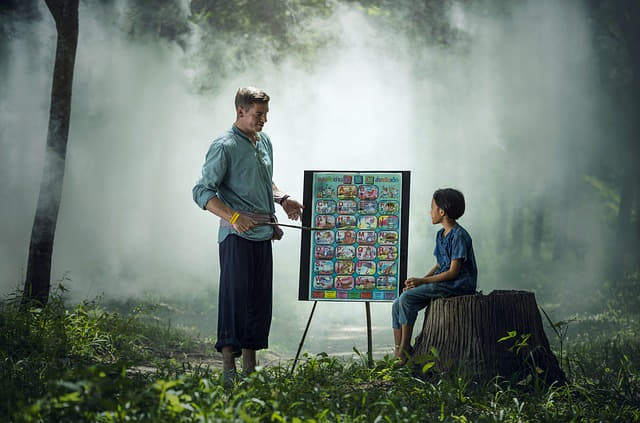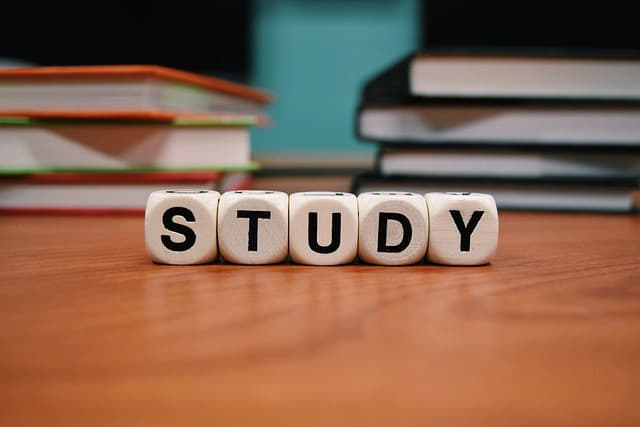We have had so far but little to say in this chapter about education. We have been occupied with the conditions and implications of growth. If our conclusions are justified, they carry with them, however, definite educational consequences. When it is said that education is development, everything depends upon how development is conceived. Our net conclusion is that life is development and that developing, growing, is life. Translated into its educational equivalents, that means (i) that the educational process has no end beyond itself; it is its own end; and that (ii) the educational process is one of continual reorganizing, reconstructing, and transforming.
1. Development when it is interpreted in comparative terms, that is, with respect to the special traits of child and adult life, means the direction of power into special channels: the formation of habits involving executive skill, definiteness of interest, and specific objects of observation and thought. But the comparative view is not final. The child has specific powers; to ignore that fact is to stunt or distort the organs upon which his growth depends. The adult uses his powers to transform his environment, thereby occasioning new stimuli which redirect his powers and keep them developing. Ignoring this fact means arrested development, a passive accommodation. Normal children and normal adults alike, in other words, are engaged in growing. The difference between them is not the difference between growth and no growth, but between the modes of growth appropriate to different conditions. With respect to the development of powers devoted to coping with specific scientific and economic problems, we may say the child should be growing in manhood. With respect to sympathetic curiosity, unbiased responsiveness, and openness of mind, we may say that the adult should be growing in childlikeness. One statement is as true as the other.
Three ideas which have been criticized, namely, the merely privative nature of immaturity, static adjustment to a fixed environment, and rigidity of habit, are all connected with a false idea of growth or development,—that it is a movement toward a fixed goal. Growth is regarded as having an end, instead of being an end. The educational counterparts of the three fallacious ideas are first, failure to take account of the instinctive or native powers of the young; secondly, failure to develop initiative in coping with novel situations; thirdly, an undue emphasis upon drill and other devices which secure automatic skill at the expense of personal perception. In all cases, the adult environment is accepted as a standard for the child. He is to be brought up to it.
Natural instincts are either disregarded or treated as nuisances—as obnoxious traits to be suppressed, or at all events to be brought into conformity with external standards. Since conformity is the aim, what is distinctively individual in a young person is brushed aside, or regarded as a source of mischief or anarchy. Conformity is made equivalent to uniformity. Consequently, there are induced lack of interest in the novel, aversion to progress, and dread of the uncertain and the unknown. Since the end of growth is outside of and beyond the process of growing, external agents have to be resorted to inducing movement toward it. Whenever a method of education is stigmatized as mechanical, we may be sure that external pressure is brought to bear to reach an external end.
2. Since in reality there is nothing to which growth is relative save more growth, there is nothing to which education is subordinate save more education. It is commonplace to say that education should not cease when one leaves school. The point of this commonplace is that the purpose of school education is to insure the continuance of education by organizing the powers that insure growth. The inclination to learn from life itself and to make the conditions of life such that all will learn in the process of living is the finest product of schooling.
When we abandon the attempt to define immaturity by means of fixed comparison with adult accomplishments, we are compelled to give up thinking of it as denoting a lack of desired traits. Abandoning this notion, we are also forced to surrender our habit of thinking of instruction as a method of supplying this lack by pouring knowledge into a mental and moral hole which awaits filling. Since life means growth, a living creature lives as truly and positively at one stage as at another, with the same intrinsic fullness and the same absolute claims. Hence education means the enterprise of supplying the conditions which insure growth, or adequacy of life, irrespective of age. We first look with impatience upon immaturity, regarding it as something to be got over as rapidly as possible. Then the adult formed by such educative methods looks back with impatient regret upon childhood and youth as a scene of lost opportunities and wasted powers. This ironical situation will endure till it is recognized that living has its own intrinsic quality and that the business of education is with that quality. The realization that life is growth protects us from that so-called idealizing of childhood which in effect is nothing but lazy indulgence. Life is not to be identified with every superficial act and interest. Even though it is not always easy to tell whether what appears to be mere surface fooling is a sign of some nascent as yet untrained power, we must remember that manifestations are not to be accepted as ends in themselves. They are signs of possible growth. They are to be turned into means of development, of carrying power forward, not indulged or cultivated for their own sake. Excessive attention to surface phenomena (even in the way of rebuke as well as of encouragement) may lead to their fixation and thus to arrested development. What impulses are moving toward, not what they have been, is the important thing for parents and teachers. The true principle of respect for immaturity cannot be better put than in the words of Emerson: “Respect the child. Be not too much his parent. Trespass not on his solitude. But I hear the outcry which replies to this suggestion: Would you verily throw up the reins of public and private discipline; would you leave the young child to the mad career of his own passions and whimsies, and call this anarchy a respect for the child’s nature? I answer,—Respect the child, respect him to the end, but also respect yourself… The two points in a boy’s training are, to keep his natural and train off all but that; to keep his natural, but stop off his uproar, fooling, and horseplay; keep his nature and arm it with knowledge in the very direction in which it points.” And as Emerson goes on to show this reverence for childhood and youth instead of opening up an easy and easy-going path to the instructors, “involves at once, immense claims on the time, the thought, on the life of the teacher. It requires time, use, insight, event, all the great lessons and assistances of God; and only to think of using it implies character and profoundness.”







